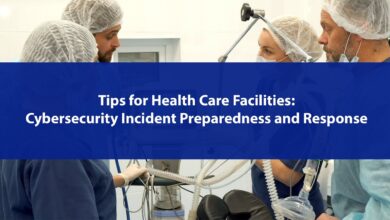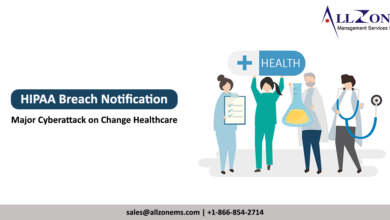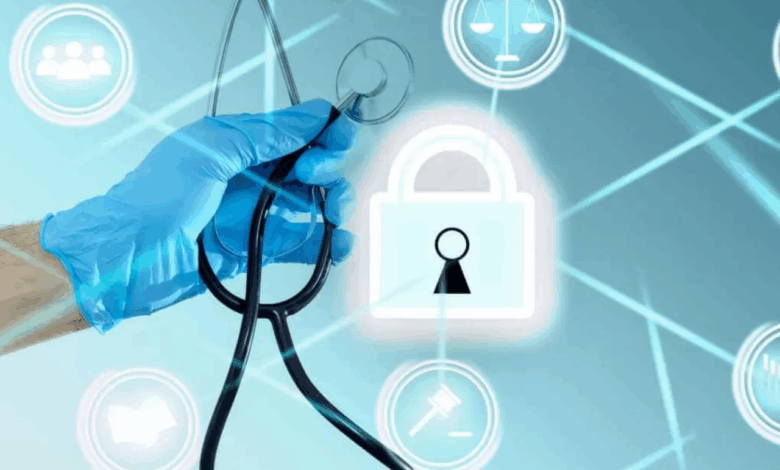
Healing Healthcare Cybersecurity A Whole of Health Approach
Healing healthcare cybersecurity with a whole of health approach isn’t just about patching software; it’s about weaving security into the very fabric of how we deliver and experience healthcare. Imagine a system where patients, providers, insurers, and government agencies work together seamlessly, each playing their part in a robust, resilient defense against cyber threats. This isn’t science fiction – it’s the future of healthcare security, and it’s closer than you think.
This post delves into the strategies, technologies, and collaborative efforts needed to make this vision a reality.
We’ll explore the unique vulnerabilities of healthcare systems, from legacy technology to the interconnectedness of modern medical devices. We’ll also examine the critical role of human factors, including employee training and a culture of security awareness. Ultimately, we aim to paint a picture of how a holistic, collaborative approach can transform healthcare cybersecurity, leading to safer, more reliable, and more trustworthy healthcare for everyone.
Defining “Whole of Health” in Cybersecurity: Healing Healthcare Cybersecurity With A Whole Of Health Approach
The healthcare landscape is increasingly complex, with interconnected systems and a vast amount of sensitive data. Traditional cybersecurity approaches, often focused on isolated technological solutions, are proving insufficient to address the multifaceted threats facing healthcare organizations. A “whole of health” approach offers a more comprehensive and effective strategy, recognizing that cybersecurity is not just an IT problem, but a shared responsibility impacting every aspect of healthcare delivery and patient well-being.A whole of health perspective in cybersecurity moves beyond the technical aspects to encompass the social, economic, and ethical dimensions of protecting patient data and maintaining the integrity of healthcare systems.
It acknowledges that cybersecurity is integral to the overall health and well-being of individuals and communities. This holistic approach considers the interconnectedness of various stakeholders and their roles in mitigating risks, fostering collaboration, and building resilience across the entire healthcare ecosystem.
Whole of Health vs. Traditional Cybersecurity Strategies
Traditional cybersecurity strategies in healthcare often focus narrowly on technical solutions like firewalls, intrusion detection systems, and antivirus software. These are crucial, but they don’t address the human element, organizational culture, or the broader societal context. A whole of health approach, in contrast, incorporates risk management across all aspects of the organization, including staff training, policy development, patient education, and inter-organizational collaboration.
For example, a traditional approach might focus solely on patching software vulnerabilities, while a whole of health approach would also include employee phishing training and a robust incident response plan involving all relevant stakeholders. This broader perspective ensures a more robust and adaptable security posture.
Key Stakeholders in a Whole of Health Approach
Understanding the roles and responsibilities of various stakeholders is crucial for effective healthcare cybersecurity. A whole of health approach necessitates collaboration and shared accountability across the entire ecosystem. The following table Artikels the key players and their involvement:
| Stakeholder | Role | Cybersecurity Responsibilities | Example Actions |
|---|---|---|---|
| Patients | Data owners, consumers of healthcare services | Protecting personal information, recognizing and reporting phishing attempts, practicing good online hygiene | Using strong passwords, being wary of suspicious emails, reporting data breaches. |
| Healthcare Providers (Hospitals, Clinics, etc.) | Data custodians, deliverers of care | Implementing robust security systems, training staff, complying with regulations, incident response | Regular security audits, employee security awareness training, HIPAA compliance, developing incident response plans. |
| Health Insurers | Data processors, payers for healthcare services | Protecting patient data used for billing and claims processing, adhering to privacy regulations | Implementing strong data encryption, conducting regular security assessments, complying with HIPAA and other relevant regulations. |
| Government Agencies (e.g., HHS, ONC) | Regulators, policy makers | Setting standards, enforcing regulations, providing guidance and resources | Developing and enforcing HIPAA, providing cybersecurity frameworks (NIST), funding research into cybersecurity threats. |
Vulnerabilities and Threats in Healthcare Cybersecurity
The healthcare sector faces a unique and escalating threat landscape. The confluence of sensitive patient data, complex interconnected systems, and a growing reliance on technology creates a fertile ground for cyberattacks. Understanding the prevalent threats and inherent vulnerabilities is crucial for implementing effective cybersecurity strategies and ensuring patient safety and data integrity. This section will delve into the specific vulnerabilities and threats that plague healthcare organizations.The healthcare industry is a prime target for cybercriminals due to the high value of the data it holds and the potential for significant financial gain through ransomware attacks or the sale of patient information on the dark web.
Furthermore, the sensitive nature of patient data necessitates robust security measures to comply with regulations like HIPAA in the US and GDPR in Europe. Failure to adequately protect this data can result in severe financial penalties, reputational damage, and erosion of patient trust.
Prevalent Cybersecurity Threats Targeting Healthcare
Healthcare organizations are frequently targeted by a range of sophisticated cyberattacks. Ransomware attacks, designed to encrypt data and demand a ransom for its release, are particularly prevalent. Phishing attacks, which involve deceptive emails or messages designed to trick individuals into revealing sensitive information, remain a significant threat. Denial-of-service (DoS) attacks can overwhelm healthcare systems, disrupting essential services and impacting patient care.
Data breaches, resulting from unauthorized access to sensitive patient information, represent a significant risk, exposing patients to identity theft and other harms. Finally, insider threats, stemming from malicious or negligent actions by employees or contractors, can also compromise healthcare data security.
Healing healthcare cybersecurity with a whole-of-health approach means considering the interconnectedness of systems. A key aspect is understanding data flow, and a recent study, check out this fascinating piece on study widespread digital twins healthcare , highlights the potential vulnerabilities and benefits of digital twins in healthcare. This understanding is crucial for building robust and resilient cybersecurity strategies that protect patient data and improve overall system health.
Examples of High-Profile Healthcare Data Breaches
Several high-profile data breaches have underscored the vulnerability of healthcare systems. For example, the 2015 Anthem breach exposed the personal information of nearly 80 million individuals, including names, addresses, social security numbers, and medical records. The consequences were far-reaching, including significant financial losses for Anthem, legal repercussions, and a loss of public trust. Similarly, the 2017 Equifax breach, while not solely focused on healthcare, significantly impacted many healthcare providers who relied on Equifax for credit checks and other services, exposing the interconnectedness of various sectors and the cascading effects of a single breach.
These incidents highlight the severe repercussions of inadequate cybersecurity measures.
Unique Vulnerabilities of Healthcare Systems
Healthcare systems possess unique vulnerabilities that exacerbate their susceptibility to cyberattacks. These vulnerabilities stem from a combination of factors:
- Legacy Systems: Many healthcare organizations rely on outdated IT infrastructure, including legacy systems that lack modern security features and are difficult to patch.
- Interconnectedness: The interconnected nature of healthcare systems, including electronic health records (EHRs), medical devices, and administrative systems, creates a larger attack surface. A breach in one system can easily propagate to others.
- Reliance on Third-Party Vendors: Healthcare providers often rely on third-party vendors for various services, including cloud storage, software development, and IT support. Security lapses within these vendors can indirectly compromise the security of healthcare organizations.
- Human Error: Phishing scams, social engineering, and simple password breaches due to human error remain a significant vulnerability. Healthcare employees may not always receive sufficient cybersecurity training or be adequately aware of potential threats.
- Lack of Resources: Many smaller healthcare organizations lack the financial and technical resources to implement comprehensive cybersecurity measures.
Implementing a Whole of Health Cybersecurity Strategy
A whole of health approach to cybersecurity necessitates a comprehensive and collaborative strategy that transcends traditional departmental silos. This means integrating cybersecurity considerations into every aspect of healthcare operations, from patient care to administrative functions, and fostering strong partnerships across all involved parties. Successfully implementing such a strategy requires a carefully designed framework, robust programs, and a commitment to ongoing collaboration.
A successful whole of health cybersecurity strategy isn’t just about installing the latest firewalls; it’s about fostering a culture of security awareness and responsibility at every level of the organization. This involves a multi-faceted approach that considers the interconnectedness of all systems and the potential impact of a breach on various stakeholders.
Designing a Comprehensive Cybersecurity Framework
A robust cybersecurity framework should be built on a foundation of established best practices, adapted to the unique needs and challenges of the healthcare environment. This framework must encompass all aspects of the organization, including clinical systems, administrative networks, and connected medical devices. The framework should be adaptable and regularly reviewed to address evolving threats and technological advancements.
It should also clearly define roles, responsibilities, and reporting structures for cybersecurity management. A well-defined framework will provide a roadmap for implementing and maintaining a strong cybersecurity posture. For example, a hospital system might incorporate the NIST Cybersecurity Framework, adapting its functions to account for specific regulations like HIPAA.
Key Components of a Robust Cybersecurity Program
A robust cybersecurity program comprises several essential components. First, a thorough risk assessment is crucial. This process identifies vulnerabilities and potential threats, prioritizing them based on their likelihood and potential impact. This informs resource allocation and the development of mitigation strategies. Secondly, a comprehensive incident response plan is essential to effectively manage and contain security incidents.
This plan should Artikel clear procedures for identifying, containing, eradicating, and recovering from security breaches. Finally, comprehensive employee training is paramount. Regular training programs should educate staff on best practices, including password security, phishing awareness, and safe data handling procedures. The goal is to foster a culture of security awareness where employees actively participate in protecting sensitive data.
Healing healthcare cybersecurity with a whole-of-health approach means addressing the human element, too. Strong, well-compensated healthcare workers are crucial for a robust system, and the recent new york nurse strike deal reached Mount Sinai Montefiore highlights this. Burnout and understaffing create vulnerabilities; a healthier workforce is better equipped to protect patient data and overall system security.
For instance, regular phishing simulations can help identify vulnerabilities in employee awareness and reinforce training.
Implementing the Cybersecurity Framework: A Step-by-Step Plan
Successful implementation requires a structured, phased approach. The first step involves establishing a cross-functional cybersecurity team with representation from IT, clinical operations, administration, and legal departments. This team will be responsible for developing and implementing the framework. Next, conduct a thorough risk assessment, identifying vulnerabilities and prioritizing them. Then, develop and implement mitigation strategies, including technological solutions and procedural changes.
Healing healthcare cybersecurity with a whole-of-health approach means considering the entire ecosystem. This includes streamlining workflows to reduce human error, a key vulnerability. The recent integration of Nuance’s generative AI scribe with Epic EHRs, as detailed in this article nuance integrates generative ai scribe epic ehrs , is a great example of this; automating note-taking reduces the chance of data breaches from manual transcription.
Ultimately, improving efficiency strengthens our collective cybersecurity posture.
Subsequently, establish a robust incident response plan and conduct regular training programs for employees. Finally, ongoing monitoring and evaluation are critical. Regular security audits and vulnerability scans are necessary to identify and address emerging threats. Effective communication and information sharing among stakeholders throughout the process are key to success. This collaborative approach ensures everyone is informed, aligned, and working towards a common goal of enhancing cybersecurity.
For example, regular meetings between the cybersecurity team and department heads can facilitate communication and address concerns promptly.
Technological Solutions for Enhanced Security
Healthcare cybersecurity faces a constantly evolving threat landscape. Implementing robust technological solutions is crucial for protecting sensitive patient data and ensuring the smooth operation of healthcare systems. This section explores the role of emerging technologies and established cybersecurity tools in fortifying healthcare’s digital defenses.Emerging Technologies in Healthcare Cybersecurity
Artificial Intelligence (AI) and Machine Learning (ML) in Cybersecurity
AI and ML are revolutionizing healthcare cybersecurity by automating threat detection and response. AI algorithms can analyze vast amounts of data to identify anomalies and potential threats in real-time, far exceeding human capabilities. This allows for faster identification of malware, phishing attempts, and insider threats. For example, AI-powered systems can analyze network traffic to detect unusual patterns indicative of a cyberattack, triggering alerts and automated responses before significant damage occurs.
ML models can also learn and adapt to new threats, improving their accuracy over time. However, the implementation of AI/ML requires significant investment in infrastructure and expertise, and there’s the ongoing challenge of ensuring the AI models themselves are not vulnerable to adversarial attacks.
Blockchain Technology for Data Security
Blockchain’s decentralized and immutable nature makes it a promising technology for enhancing data security in healthcare. By recording patient data on a distributed ledger, blockchain can improve data integrity and transparency, making it more difficult for unauthorized individuals to alter or delete information. This is particularly relevant for sensitive data like medical records and genomic information. Furthermore, blockchain can facilitate secure data sharing between different healthcare providers, improving interoperability while maintaining patient privacy.
However, scalability and the complexity of integrating blockchain into existing healthcare systems remain significant challenges. Real-world examples of blockchain implementation are still relatively limited in healthcare, but ongoing research and development are showing promising results.
Internet of Things (IoT) Security, Healing healthcare cybersecurity with a whole of health approach
The increasing use of IoT devices in healthcare (e.g., wearable sensors, medical devices) introduces new security vulnerabilities. Securing these devices requires a multi-layered approach, including robust authentication mechanisms, encryption, and regular software updates. Furthermore, healthcare organizations need to implement strong access controls and monitor IoT device activity for suspicious behavior. The lack of standardization in IoT device security and the potential for vulnerabilities in interconnected systems pose significant challenges.
Consider the example of a compromised insulin pump; the consequences could be life-threatening.
Comparison of Cybersecurity Technologies
Understanding the strengths and weaknesses of different cybersecurity technologies is vital for selecting the most appropriate solutions for a specific healthcare environment. The following table compares five common technologies:
| Technology | Strengths | Weaknesses | Implementation Costs |
|---|---|---|---|
| Firewalls | Prevent unauthorized access to networks; relatively easy to implement. | Can be bypassed by sophisticated attacks; require regular updates. | Low to moderate |
| Intrusion Detection Systems (IDS) | Detect malicious activity within a network; provide real-time alerts. | Can generate false positives; require skilled personnel to manage. | Moderate to high |
| Data Loss Prevention (DLP) Tools | Prevent sensitive data from leaving the network; monitor data usage. | Can be complex to configure; may impact user productivity. | Moderate to high |
| Antivirus Software | Detect and remove malware from computers and servers. | Can be slow; may not detect all malware; requires regular updates. | Low to moderate |
| Endpoint Detection and Response (EDR) | Provides advanced threat detection and response capabilities at the endpoint level; allows for faster incident response. | Requires significant investment in infrastructure and expertise; can be complex to manage. | High |
The Human Element in Healthcare Cybersecurity
Healthcare cybersecurity isn’t just about firewalls and antivirus software; it’s fundamentally about people. The weakest link in any security system is often the human element. Phishing scams, social engineering attacks, and accidental data breaches are all too common, highlighting the critical need for robust employee training and a strong security culture. This section will explore the importance of human factors in healthcare cybersecurity and how to mitigate the risks associated with them.
Healthcare professionals are often overwhelmed with demanding workloads and complex procedures. This pressure can make them more susceptible to falling victim to sophisticated cyberattacks. A single click on a malicious link or the unintentional disclosure of sensitive patient information can have devastating consequences, impacting patient privacy, organizational reputation, and potentially even patient safety. Therefore, investing in comprehensive cybersecurity training and fostering a culture of security awareness is paramount.
Effective Cybersecurity Awareness Training Methods for Healthcare Professionals
Effective cybersecurity awareness training must be engaging, relevant, and tailored to the specific roles and responsibilities of healthcare professionals. Simulations, interactive modules, and gamification can significantly improve engagement and knowledge retention. For example, realistic phishing simulations can help employees identify suspicious emails and attachments, while interactive modules can explain complex security concepts in a clear and concise manner.
Gamified training programs can turn learning into a fun and competitive experience, increasing participation and knowledge retention. Furthermore, regular refresher courses and updates are essential to ensure that employees remain informed about the latest threats and best practices.
Best Practices for Cultivating a Culture of Cybersecurity Within a Healthcare Organization
Creating a culture of cybersecurity requires a multi-pronged approach involving leadership commitment, ongoing training, and consistent reinforcement of security policies. This is not a one-time initiative but rather an ongoing process that requires constant attention and adaptation.
The following best practices are crucial for establishing a strong cybersecurity culture:
- Leadership Commitment: Visible and consistent support from senior management is crucial. Leaders must champion cybersecurity initiatives, allocate sufficient resources, and hold employees accountable for adhering to security policies.
- Comprehensive Training Programs: Regular and engaging training programs should be tailored to different roles and responsibilities within the organization. Training should cover topics such as phishing awareness, password security, data handling, and incident reporting.
- Clear and Concise Security Policies: Organizations should have clear, concise, and easily accessible security policies that are regularly reviewed and updated. These policies should be communicated effectively to all employees.
- Regular Security Awareness Campaigns: Regular campaigns, such as newsletters, emails, and posters, can help reinforce key security messages and keep cybersecurity top-of-mind.
- Incentivize Secure Behavior: Rewarding employees for reporting security incidents and adhering to security policies can encourage a culture of security awareness and responsibility.
- Open Communication and Feedback: Creating a safe environment where employees feel comfortable reporting security incidents or concerns without fear of retribution is vital. Regular feedback sessions can help identify areas for improvement in the organization’s cybersecurity program.
- Regular Security Audits and Assessments: Regular audits and assessments can help identify vulnerabilities and weaknesses in the organization’s security posture. These assessments should be used to inform and improve training programs and security policies.
Regulatory Compliance and Legal Considerations
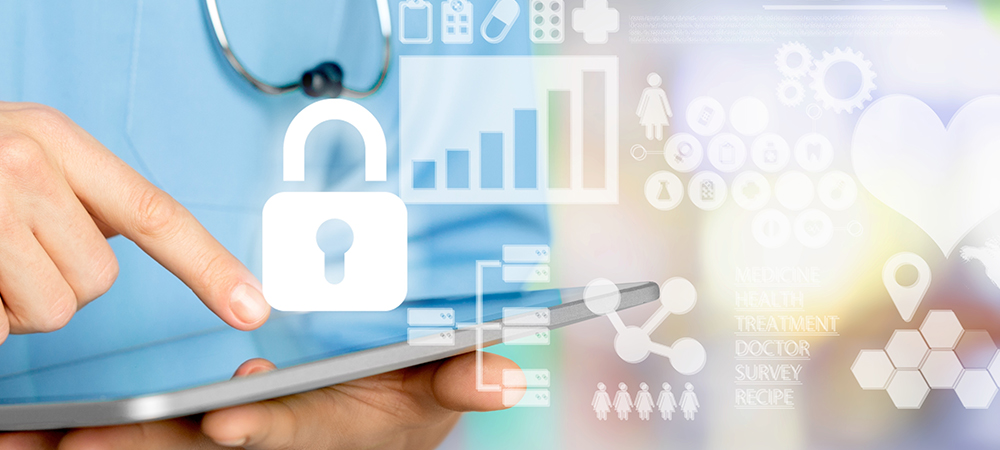
Source: intelligentcio.com
Navigating the complex legal landscape of healthcare cybersecurity is crucial for protecting patient data and avoiding significant penalties. Strict regulations exist to ensure the confidentiality, integrity, and availability of sensitive health information. Understanding these frameworks and implementing robust compliance measures is paramount for any healthcare organization.The legal and regulatory frameworks governing healthcare data security are multifaceted and vary depending on geographic location.
However, some key regulations have global impact or serve as models for other jurisdictions. Non-compliance can lead to substantial fines, legal action, reputational damage, and loss of patient trust.
HIPAA Compliance Requirements
The Health Insurance Portability and Accountability Act (HIPAA) in the United States is a cornerstone of healthcare data protection. It establishes national standards for the electronic exchange of protected health information (PHI) and mandates safeguards to protect its privacy and security. Key requirements include implementing administrative, physical, and technical safeguards to ensure the confidentiality, integrity, and availability of PHI.
These safeguards encompass a range of measures, from employee training and security awareness programs to robust encryption and access control systems. Failure to comply with HIPAA can result in significant civil and criminal penalties, ranging from monetary fines to imprisonment. For example, a hospital failing to implement adequate encryption could face millions of dollars in fines following a data breach.
GDPR Compliance Requirements
The General Data Protection Regulation (GDPR) in the European Union is another significant regulatory framework impacting healthcare data security. It grants individuals more control over their personal data, including the right to access, rectify, erase, and restrict the processing of their information. Healthcare organizations processing personal data of EU citizens must comply with GDPR’s stringent requirements, including obtaining explicit consent for data processing, implementing appropriate technical and organizational measures to protect personal data, and notifying authorities of data breaches within 72 hours.
Non-compliance with GDPR can result in substantial fines, up to €20 million or 4% of annual global turnover, whichever is higher. A hypothetical case could involve a pharmaceutical company failing to adequately secure patient data transmitted from a clinical trial in the EU, leading to a significant fine for non-compliance.
Potential Legal Consequences of Non-Compliance
The legal consequences of failing to comply with healthcare data security regulations can be severe. These consequences extend beyond financial penalties and can include reputational damage, loss of patient trust, and legal action from individuals whose data has been compromised. In addition to fines, organizations might face lawsuits from patients, regulatory investigations, and potential criminal charges depending on the severity and nature of the violation.
The long-term impact on an organization’s viability and public standing can be substantial. For instance, a nursing home experiencing a data breach resulting in the exposure of sensitive patient information could face numerous lawsuits, regulatory fines, and a significant decline in patient admissions.
Measuring the Effectiveness of Cybersecurity Initiatives
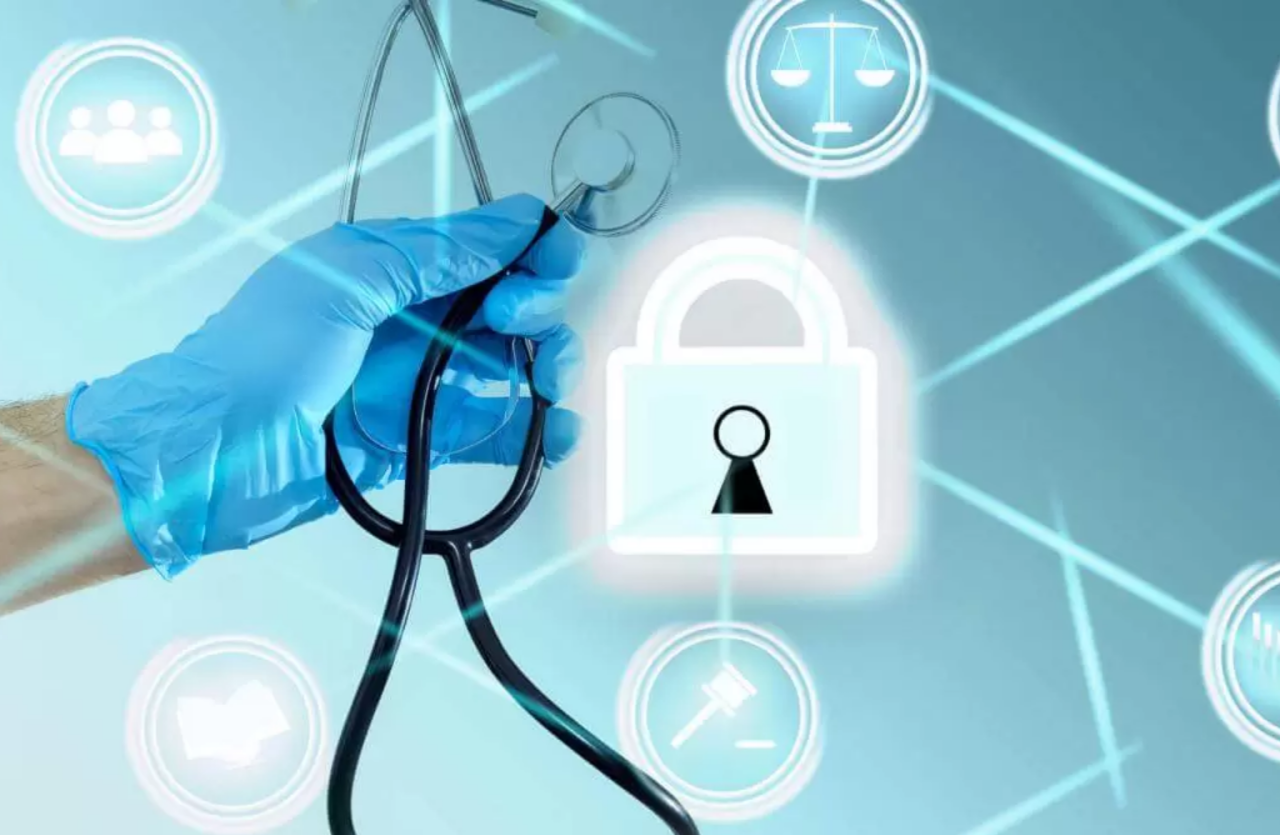
Source: healthtech.report
Measuring the effectiveness of a healthcare cybersecurity program is crucial for ensuring patient data protection and organizational compliance. A robust measurement system allows for continuous improvement, resource allocation optimization, and demonstration of accountability to stakeholders. Without concrete metrics, it’s impossible to truly understand the strengths and weaknesses of your security posture.
Key Performance Indicators (KPIs) for Healthcare Cybersecurity
Effective measurement requires a focus on relevant KPIs. These metrics should align with the organization’s overall cybersecurity strategy and risk profile. A balanced scorecard approach, incorporating both quantitative and qualitative data, provides a comprehensive view.
- Mean Time To Detect (MTTD): The average time it takes to identify a security incident. A lower MTTD indicates a more proactive and effective security monitoring system.
- Mean Time To Respond (MTTR): The average time it takes to contain and remediate a security incident. A lower MTTR demonstrates efficient incident response capabilities.
- Number of Security Incidents: Tracking the total number of security incidents (e.g., phishing attempts, malware infections, data breaches) over time helps identify trends and potential vulnerabilities.
- Percentage of Vulnerabilities Remediated: This KPI tracks the organization’s progress in addressing identified vulnerabilities. A high percentage indicates strong vulnerability management practices.
- Security Awareness Training Completion Rate: Measures the participation rate in security awareness training programs. High completion rates suggest a commitment to educating staff about cybersecurity threats.
- Number of successful phishing attacks: This shows the effectiveness of security awareness training and other preventative measures against social engineering attacks.
- Compliance Audit Score: The score achieved during regulatory compliance audits (e.g., HIPAA, GDPR). A high score indicates strong adherence to regulatory requirements.
Methods for Tracking and Reporting on Cybersecurity Metrics
Data collection and analysis are essential for effective KPI tracking. This involves implementing a robust security information and event management (SIEM) system, integrating various security tools, and establishing standardized reporting procedures. Regular reporting, ideally on a monthly or quarterly basis, provides stakeholders with up-to-date insights into the organization’s cybersecurity performance.
Data visualization tools, such as dashboards and charts, can effectively communicate complex data to a wider audience. These tools allow for easy identification of trends, anomalies, and areas needing improvement.
Sample Cybersecurity Assessment Report
The following table presents a hypothetical cybersecurity assessment report, showcasing the use of KPIs and data visualization:
| KPI | Target | Actual | Status |
|---|---|---|---|
| MTTD | < 24 hours | 36 hours | Needs Improvement |
| MTTR | < 48 hours | 24 hours | Meeting Target |
| Number of Security Incidents (Last Quarter) | < 10 | 5 | Meeting Target |
| Percentage of Vulnerabilities Remediated | > 90% | 85% | Needs Improvement |
| Security Awareness Training Completion Rate | > 95% | 98% | Exceeding Target |
| Number of successful phishing attacks | 0 | 2 | Needs Improvement |
| HIPAA Compliance Audit Score | > 90% | 95% | Exceeding Target |
Future Trends in Healthcare Cybersecurity
The healthcare landscape is undergoing a rapid digital transformation, bringing with it both unprecedented opportunities and significant cybersecurity challenges. The convergence of increasingly sophisticated cyberattacks and the growing reliance on interconnected medical devices and electronic health records (EHRs) paints a complex picture for the future of healthcare cybersecurity. Understanding these emerging trends is crucial for proactive mitigation and ensuring patient safety and data integrity.
The interconnected nature of modern healthcare systems, coupled with the ever-evolving tactics of cybercriminals, presents a dynamic threat environment. Predicting the future with certainty is impossible, but by analyzing current trends and technological advancements, we can anticipate the likely challenges and opportunities that lie ahead.
Emerging Threats and Challenges
The next few years will likely witness a surge in sophisticated and targeted attacks against healthcare organizations. Ransomware attacks, already a significant problem, will become more frequent and devastating, potentially crippling essential services and jeopardizing patient care. Furthermore, the increasing reliance on cloud-based services and the Internet of Medical Things (IoMT) will expand the attack surface, creating more vulnerabilities for malicious actors to exploit.
We can expect to see a rise in attacks targeting specific medical devices, such as insulin pumps or pacemakers, potentially leading to direct harm to patients. The increasing sophistication of AI-powered attacks, capable of bypassing traditional security measures, also poses a significant threat. For example, a recent study simulated an AI-powered attack that successfully bypassed multiple layers of security in a hospital network, highlighting the need for advanced threat detection and response capabilities.
Technological Advancements and Their Impact
Technological advancements offer both opportunities and challenges. The rise of quantum computing, while promising immense computational power for various applications, also poses a significant threat to current encryption methods. Quantum computers could potentially break widely used encryption algorithms, rendering sensitive patient data vulnerable. However, advancements in cryptography, such as post-quantum cryptography, are underway to address this challenge.
Blockchain technology offers potential benefits in securing patient data and managing medical records, providing increased transparency and immutability. The implementation of zero-trust security models, which assume no implicit trust and verify every user and device before granting access, will become increasingly crucial in mitigating the risks associated with interconnected systems. For instance, a hospital implementing a zero-trust architecture would require each device attempting to access the network to authenticate itself before being granted access, even if it’s already on the internal network.
This prevents lateral movement within the network by a compromised device.
The Evolving Role of Artificial Intelligence
Artificial intelligence is poised to play a transformative role in healthcare cybersecurity. AI-powered threat detection systems can analyze vast amounts of data in real-time to identify anomalies and potential threats far more quickly than human analysts. These systems can learn and adapt to new attack patterns, improving their effectiveness over time. AI can also be used to automate security tasks, such as vulnerability scanning and incident response, freeing up human experts to focus on more complex issues.
However, the use of AI in cybersecurity also presents challenges. AI-powered attacks are becoming more sophisticated, requiring equally advanced AI-based defenses. Furthermore, the potential for bias in AI algorithms needs to be carefully considered to ensure fair and equitable security outcomes. A real-world example of AI’s application is seen in threat intelligence platforms that use machine learning to identify patterns in malicious network traffic and predict potential attacks, allowing security teams to proactively mitigate threats.
Final Review
Securing healthcare in the digital age demands a paradigm shift – a move away from siloed approaches to a unified, collaborative strategy. By embracing a whole of health perspective, we can build a healthcare ecosystem that is not only resilient to cyber threats but also fosters trust and strengthens the patient-provider relationship. The journey to a more secure healthcare future requires a commitment from every stakeholder, but the rewards – safer patient data, more efficient operations, and a stronger healthcare system – are immeasurable.
Let’s work together to build a healthier, safer digital healthcare landscape.
FAQ Corner
What are some common human errors that lead to healthcare cybersecurity breaches?
Phishing scams, clicking on malicious links, using weak passwords, and failing to report suspicious activity are common human errors that can compromise healthcare cybersecurity.
How can small healthcare providers afford to implement robust cybersecurity measures?
Small providers can leverage cloud-based security solutions, participate in collaborative security initiatives, and prioritize employee training to enhance their security posture without breaking the bank.
What is the role of insurance companies in a whole-of-health cybersecurity approach?
Insurers play a crucial role by providing financial incentives for strong cybersecurity practices, sharing threat intelligence, and supporting the development of industry-wide security standards.
How can we measure the effectiveness of a whole-of-health cybersecurity approach?
Key performance indicators (KPIs) such as reduced number of breaches, improved incident response times, and increased employee security awareness can be used to gauge the success of a whole-of-health approach.

